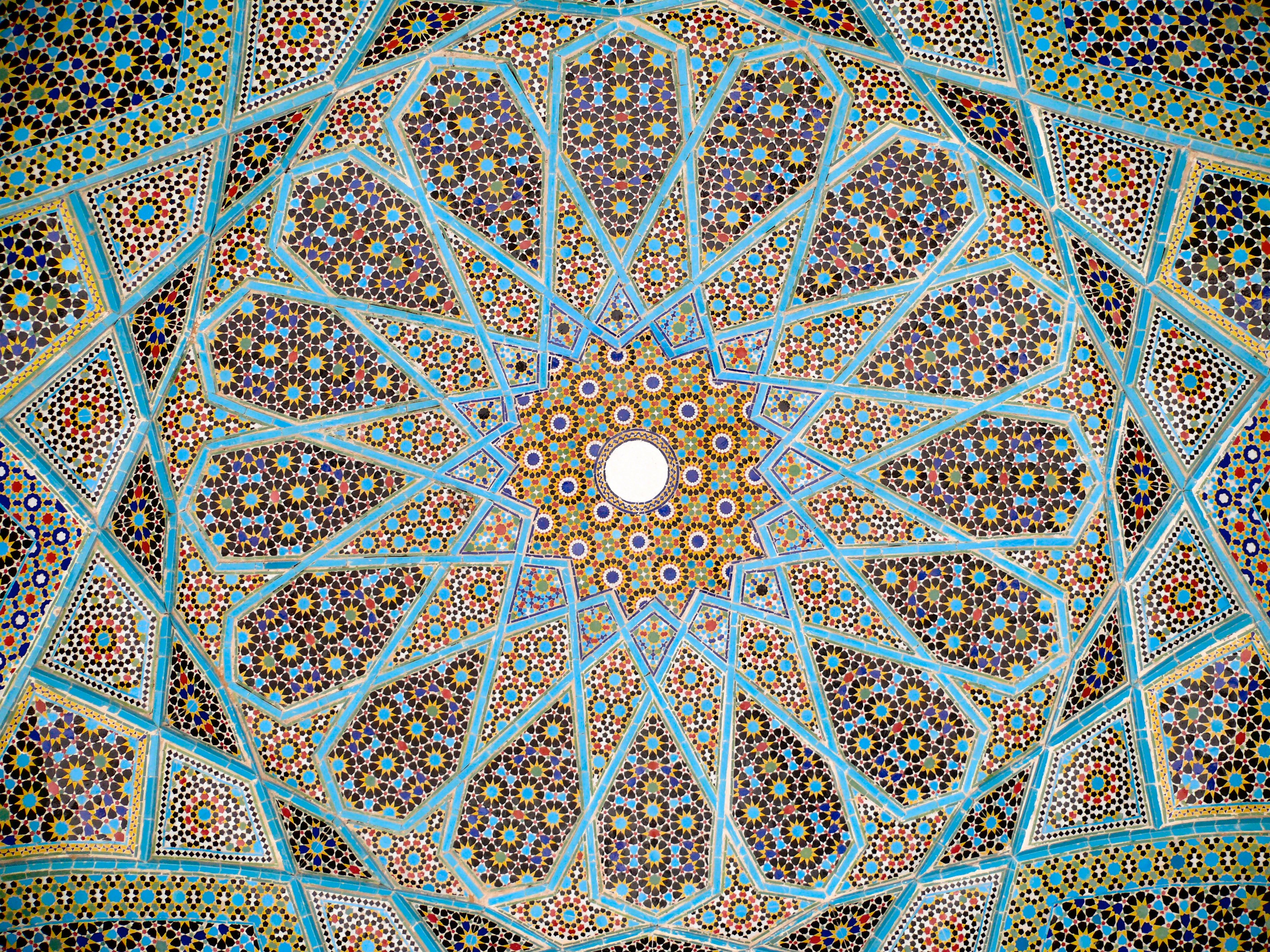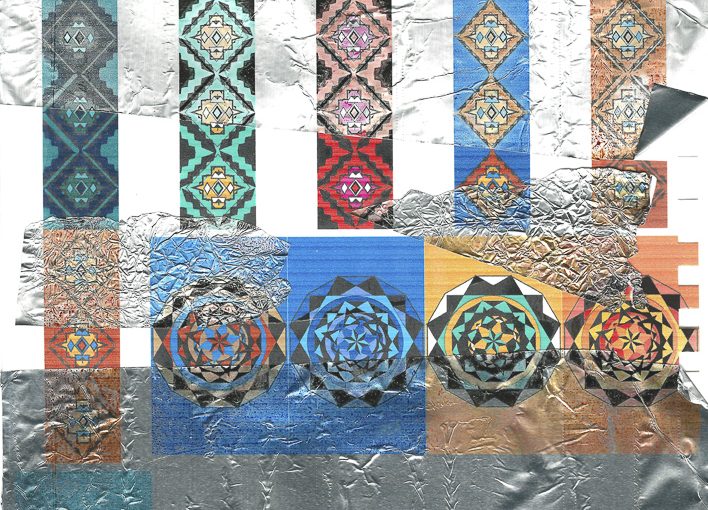Islamic geometric patterns derived from simpler designs used in earlier cultures: Greek, Roman, and Sasanian. They are one of three forms of Islamic decoration, the others being the arabesque based on curving and branching plant forms, and Islamic calligraphy; all three are frequently used together.
Many traditional patterns were based on is the division of the circle (as a symbol of unity and diversity) in nature into regular parts. From these divisions a regular grid of triangles and/or other polygons is established, on top of which the design is elaborated. Islamic designers used the full range of Archimedean tilings (comprised of simple polygons) first discovered by the Greeks, but added to and expanded upon these. The underling tiling pattern or ‘grid’ is usually hidden beneath the final design, but this hidden order gives the designs their meditative power.
Evolution of Islamic geometric patterns Yahya Abdullahin and, Mohamed Rashid Bin Embi
Islamic Geometric Patterns Wikipedia
The art of Islamic Pattern by Richard Henry
The earliest geometrical forms in Islamic art were occasional isolated geometric shapes such as 8-pointed stars and lozenges containing squares.

Persian ‘Girih’ or knot designs: From 1086 7- and 10-point girih patterns (with heptagons, 5- and 6-pointed stars, triangles and irregular hexagons) appear in the Friday Mosque at Isfahan. 10-point girih became widespread. Soon afterwards, sweeping 9-, 11-, and 13-point girih patterns were used in the Barsian Mosque, also in Persia.
Peter Cromwell analysis of Persian Girih design construction Study from Liverpool University

Geometric detail Alaeddin mosque, Konya Turkey 8 and 12 point girih designs from 1220 onwards


Drawing Islamic Geometric Designs in Adobe Illustrator: see post
Draw freehand


